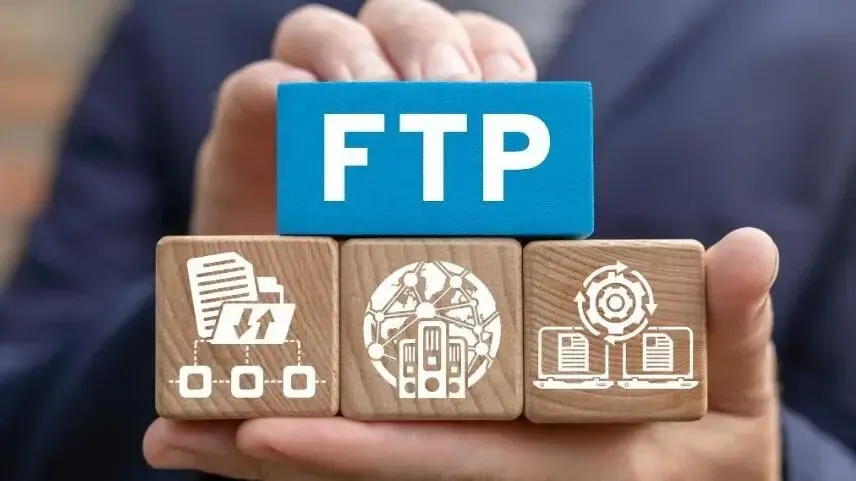If you’re new to the world of building and managing websites you may have seen or heard others talk about something called ‘FTP’. Articles often mention “logging into your server via FTP'' or “accessing your website via FTP” but for those who haven’t set up a website before this can often be confusing - I know it was for me the first time around! In this guide we’ll be looking at what FTP is, why it’s needed and how you can use it to access a Wordpress (or non-Wordpress) website on your Verpex hosting account
What is FTP and why do I need it?
File Transfer Protocol (or FTP for short) is used to communicate and send files between computers on a TCP/IP (Transmission Control Protocol/Internet Protocol) network, more commonly known as the Internet.
It essentially allows users who have the correct permissions, to download and upload files to the File Transfer Protocol server - in this case, your web hosting provider server - to where your website and its associated files live.
Having access to your server via FTP is important because it gives you the ability to browse, edit, upload and delete all of the files which are currently on your server. This could come in useful when trying to complete tasks such as installing Wordpress or uploading a static site to your web server. Using an ‘FTP Client’ you are able to see and browse the files that live on your website’s server as easily as you can a USB flash drive.
Now you know what FTP is and why it’s important for your website, let’s get it setup on your device so that you can make use of your shiny new server.
Step 1 - Creating an FTP Account
As mentioned above, it’s important that only users who have been given permission should be able to access your website’s server (otherwise they could replace your site’s files with their own!) Because of this we need to set up an FTP account.
Login to your Verpex account and from the dashboard, navigate to the Control Panel by clicking the button highlighted in the screenshot below - in this case we’ll be logging in to the control panel of our ‘Iron’ web hosting plan:
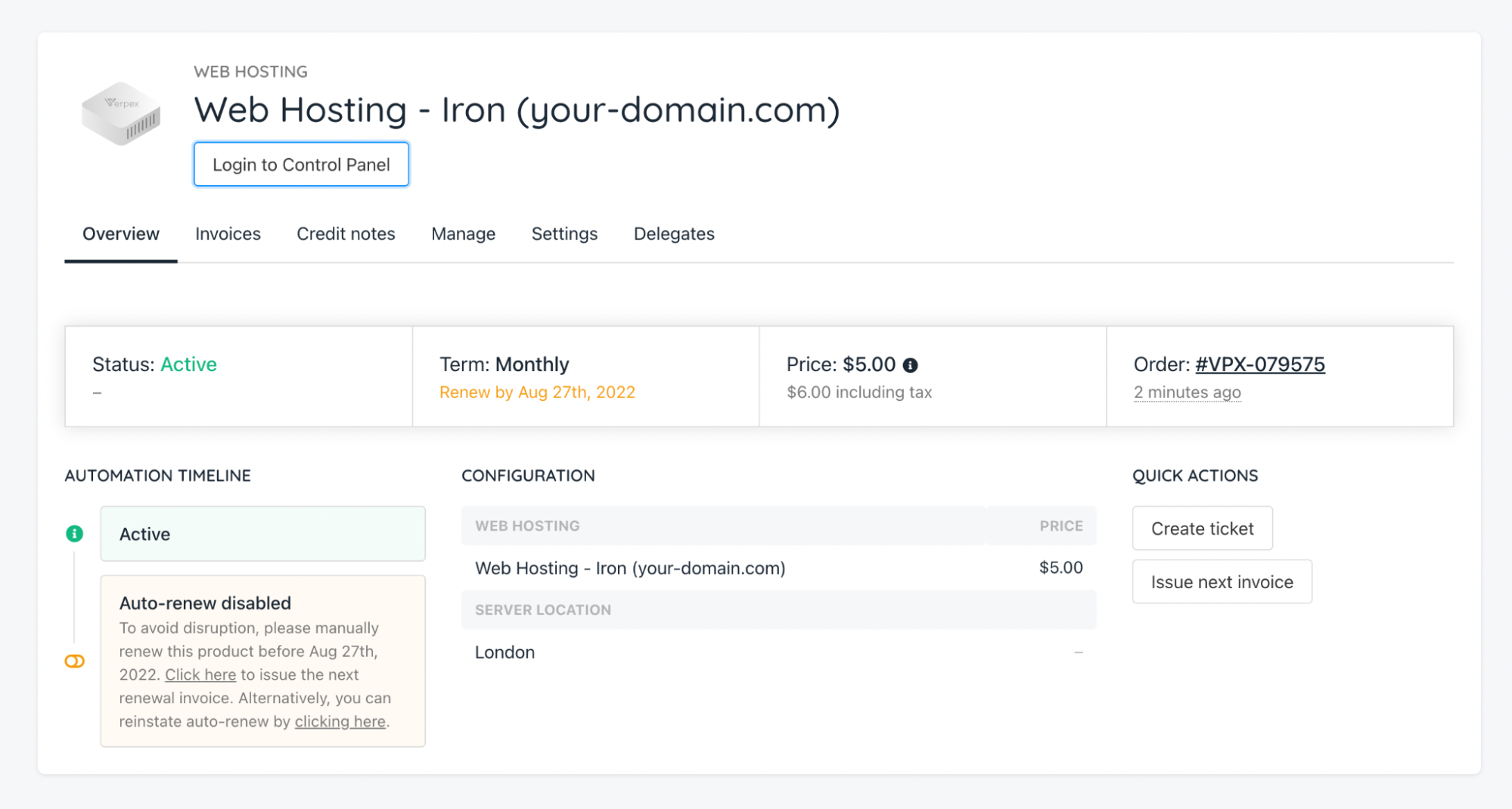
Once clicked, you should be redirected to a page that looks similar to the screenshot below - this is called the cPanel and is the beating heart of your web server - from here you can control all of the settings relevant to your hosting account:
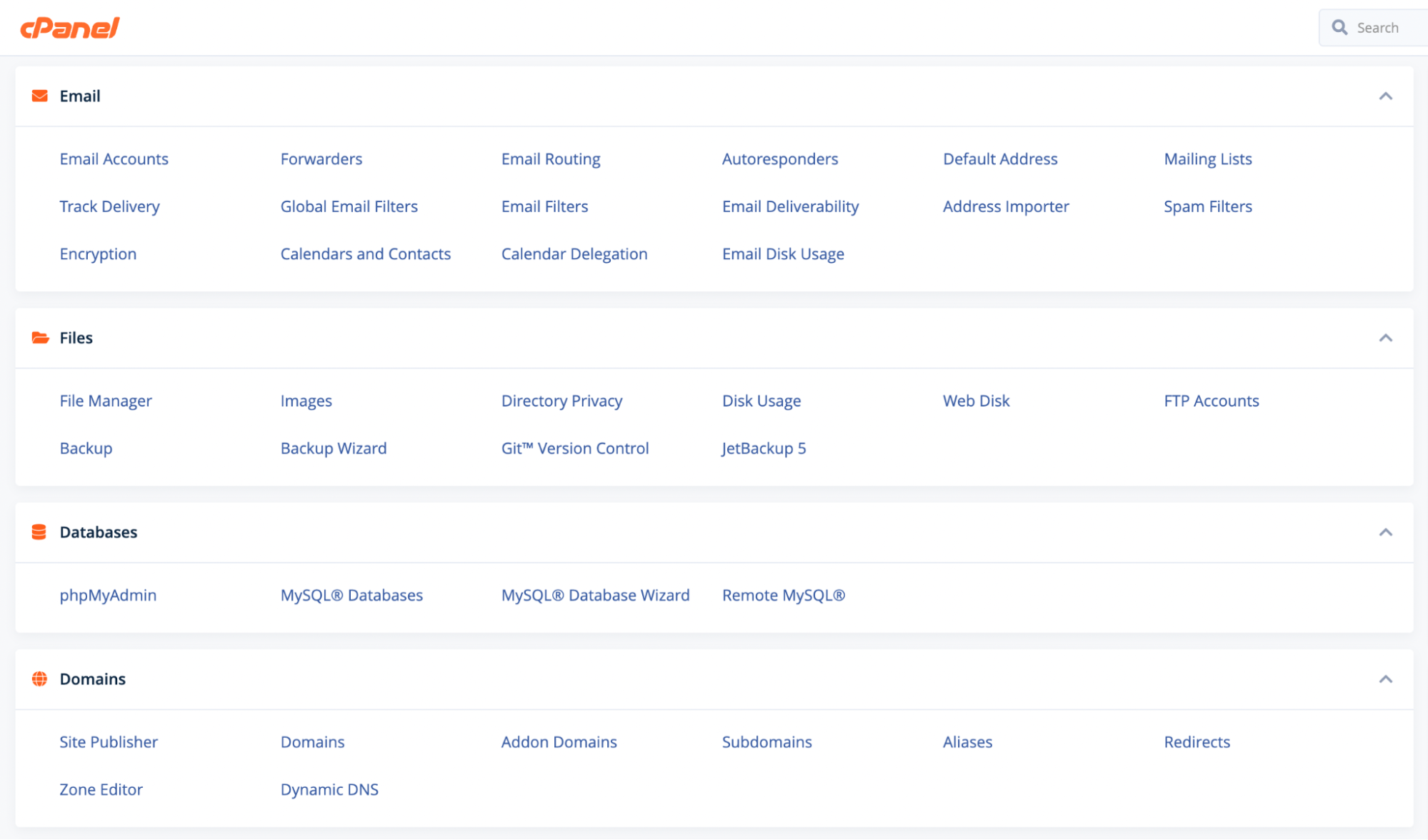
Under the ‘Files’ section look for ‘FTP Accounts’ and click the link. The page you are redirected to will have a heading saying ‘Add FTP Account’ at the top:
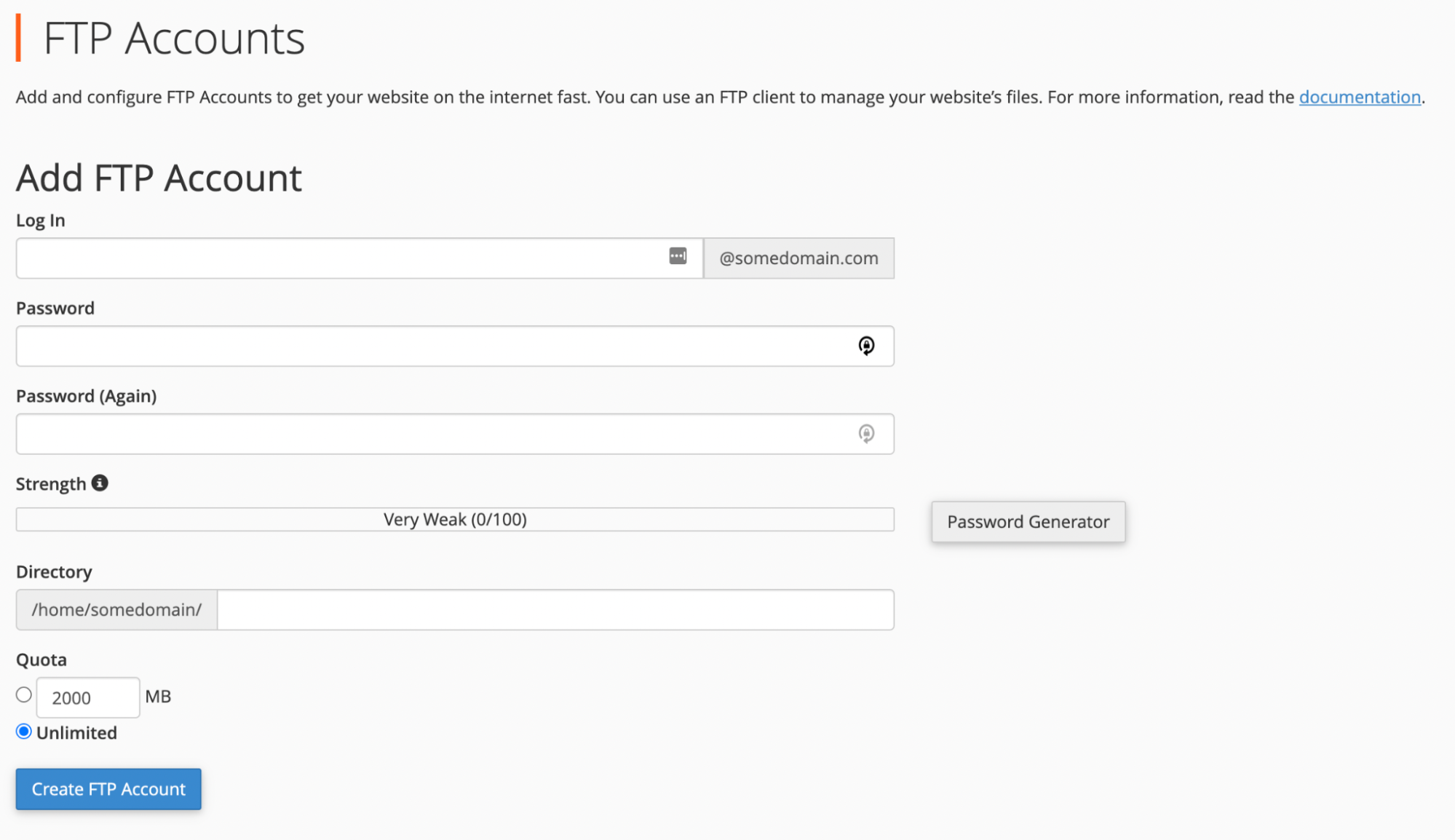
This is where you will manage all of the FTP accounts for your server and yes, you can have more than one! For example you may wish to set up an FTP account with different credentials or levels of access but we’ll cover that in a forthcoming tutorial.
You will also see if you scroll down that there may be some accounts already listed under ‘Special FTP Accounts’. These are typically created automatically when you purchase a hosting plan and generally have the highest level of permissions:
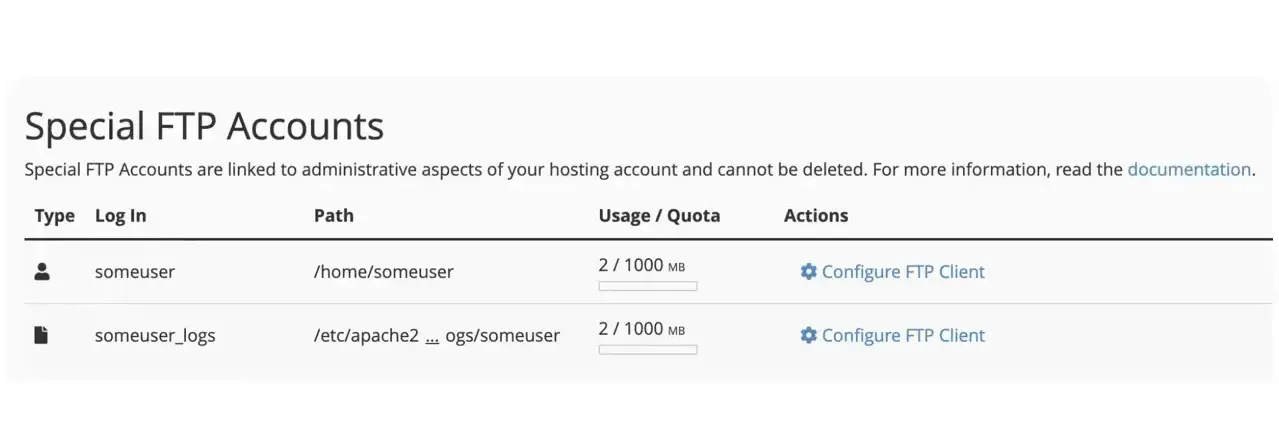
They aren’t always created though, so for best practice we’re going to scroll back up to the top of the page and create ourselves a new FTP account.
Fill in the required fields, making sure to leave ‘directory’ blank (this means that the user we are creating will have access to the whole web server) and ensure that under ‘Quota’, the selected option is ‘Unlimited’ as in the screenshot below.
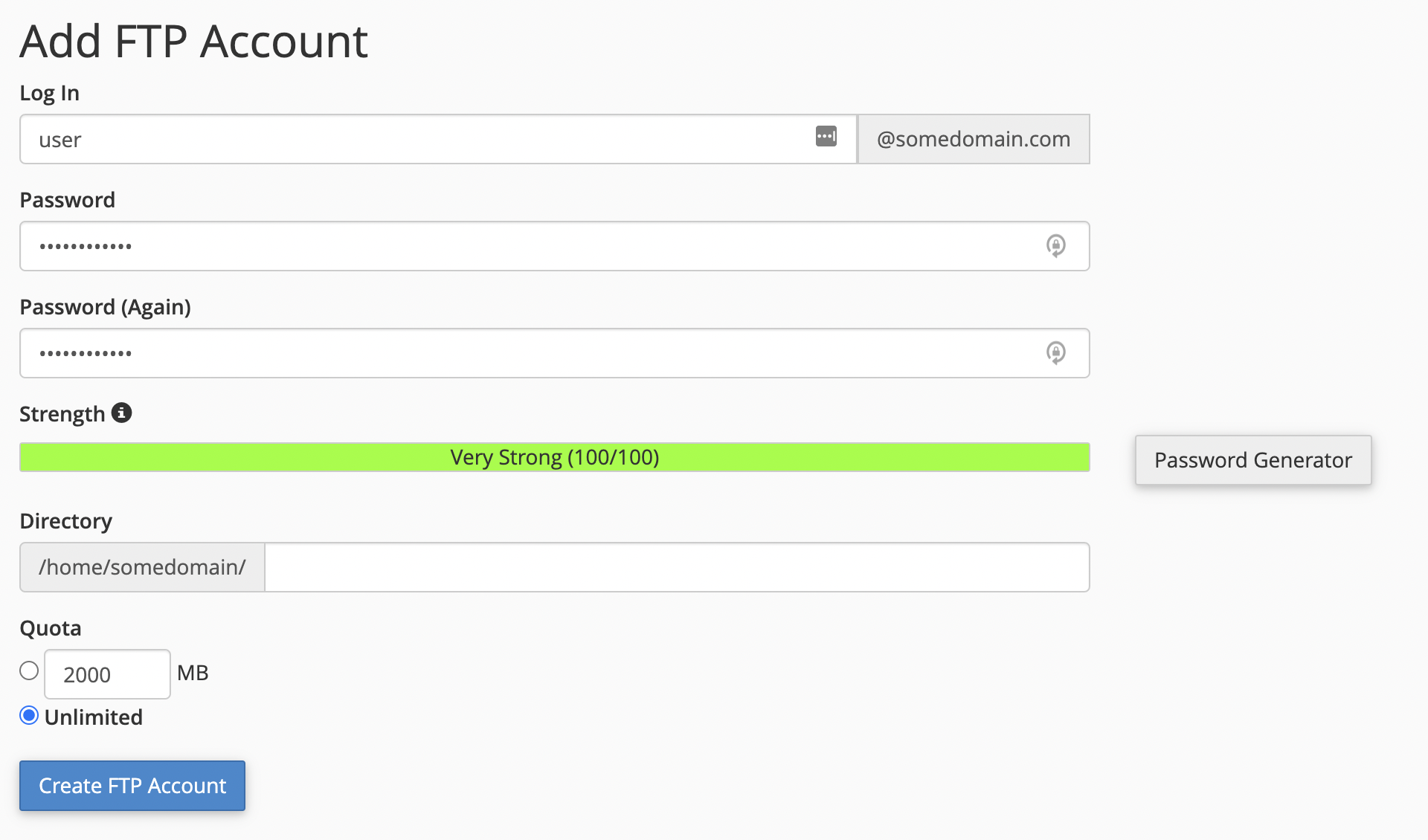
Be sure to keep a note of the password if you used the generator as we’ll be needing this later. If everything went as expected, you should see a success message as shown below:
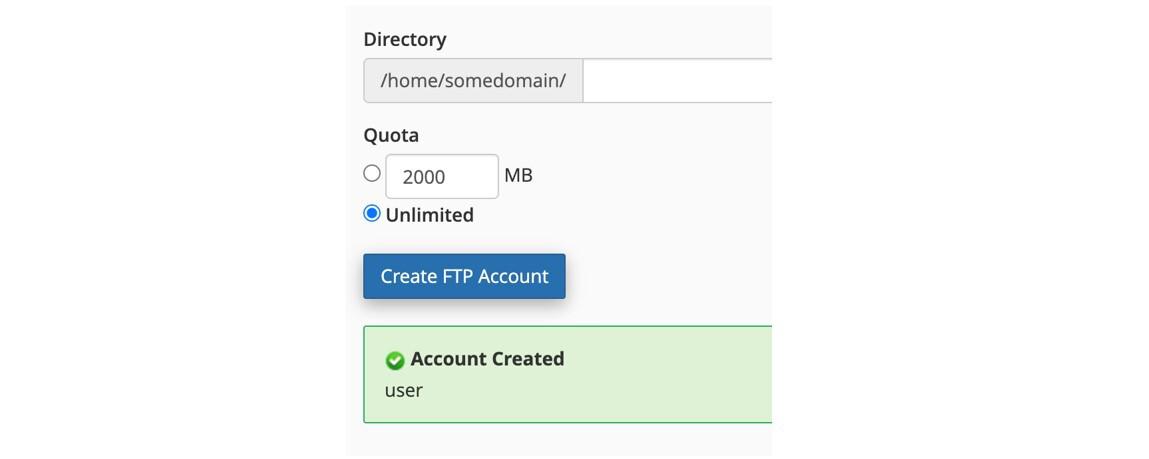
Great! You’ve successfully created an FTP account which we will now be using to access your site’s files.
Step 2 - Downloading an FTP client
In order to access your web server using File Transfer Protocol, we’ll be installing an ‘FTP Client’ onto your computer. There are other more advanced ways of accessing a web server using FTP but this is by far the easiest and most user friendly way.
Depending on whether you are using Mac, Windows or Linux, different FTP clients will be available for download. They all do the same thing though so it shouldn’t matter too much which one you are using.
For this tutorial we’ll be using ‘FileZilla’ as it’s free and is supported on both Mac and Windows machines.
Head over to: FileZilla and download and install the FileZilla client as you would any other application.
Step 3 - Connecting to your web server via FTP Client
Once installed successfully, open up your FTP client of choice. If, like us, you’re using FileZilla it should look like the below:
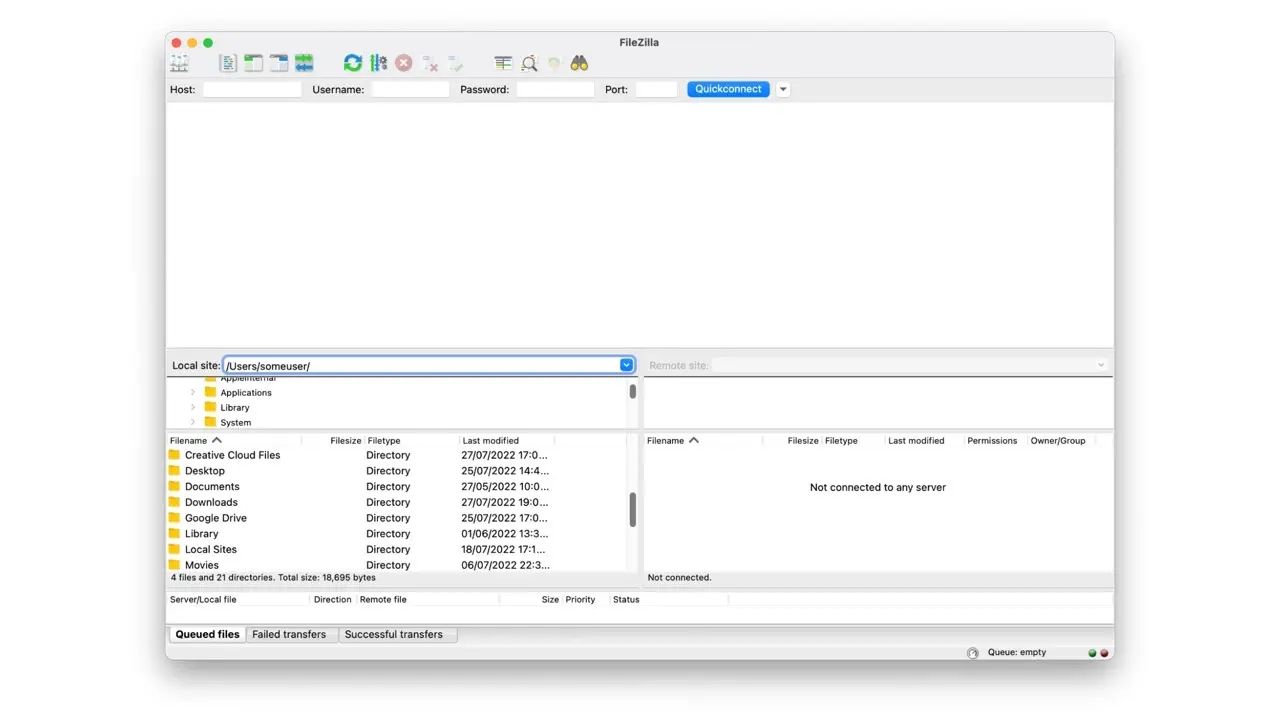
You’ll notice that among the other panes of the application, there are four input boxes across the top of the window - these are very important and are where we’ll be inputting our access details. In FileZilla there is also a bottom pane which shows you the files on your local machine; this is not present on all FTP clients and can be ignored for now, but is essentially the same as having ‘Finder’ (on Mac) or ‘Explorer’ (on Windows) open in another window.
In the ‘host’ field, we want to input the IP address of the web server we are trying to connect to. We can find this by navigating back to the cPanel shown in Step 1 and looking under the ‘General Information’ tab on the right hand side as highlighted in the screenshot below:
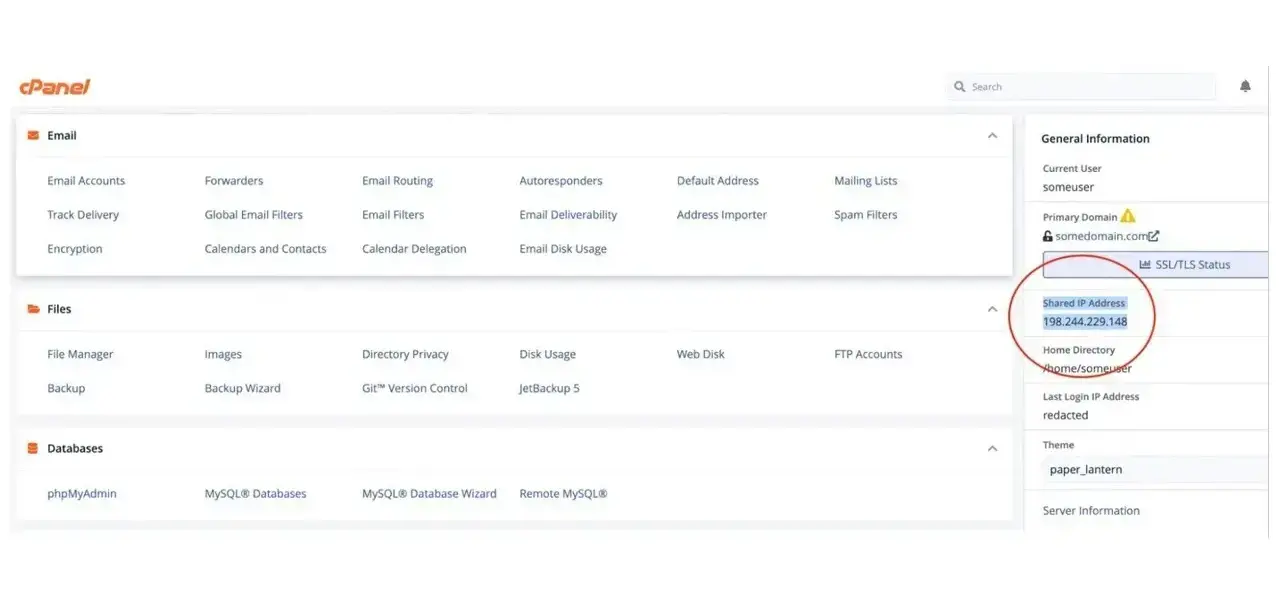
The IP address is a string of numbers as seen in the example below - copy this value and paste it into the FileZilla client:

We then want to fill in the username and password.
Please note: when filling in the username it should include @your-domain.com afterwards. In our case we set the username to be ‘user’ and the domain linked to our account is ‘somedomain.com’ so we should input ‘[email protected]’. If you’re not sure, navigate to FTP Accounts via the cPanel and if you scroll down you will see the user created under ‘FTP Accounts’ as in the screenshot below:

Next type in your password we generated earlier.
In the ‘port’ field, enter the number ‘21’ - this is the default port for FTP access and is what the Verpex servers use - once complete it should look like the below:

Click the button to connect - if all has been successful, you should see some ‘logs’ come up in the main part of the window, one of which will say “TLS connection established”.
If you see this, congratulations! You have successfully connected to your web server via File Transfer Protocol. On the right hand side of the window is the file structure of your current web server (‘Remote Site’):
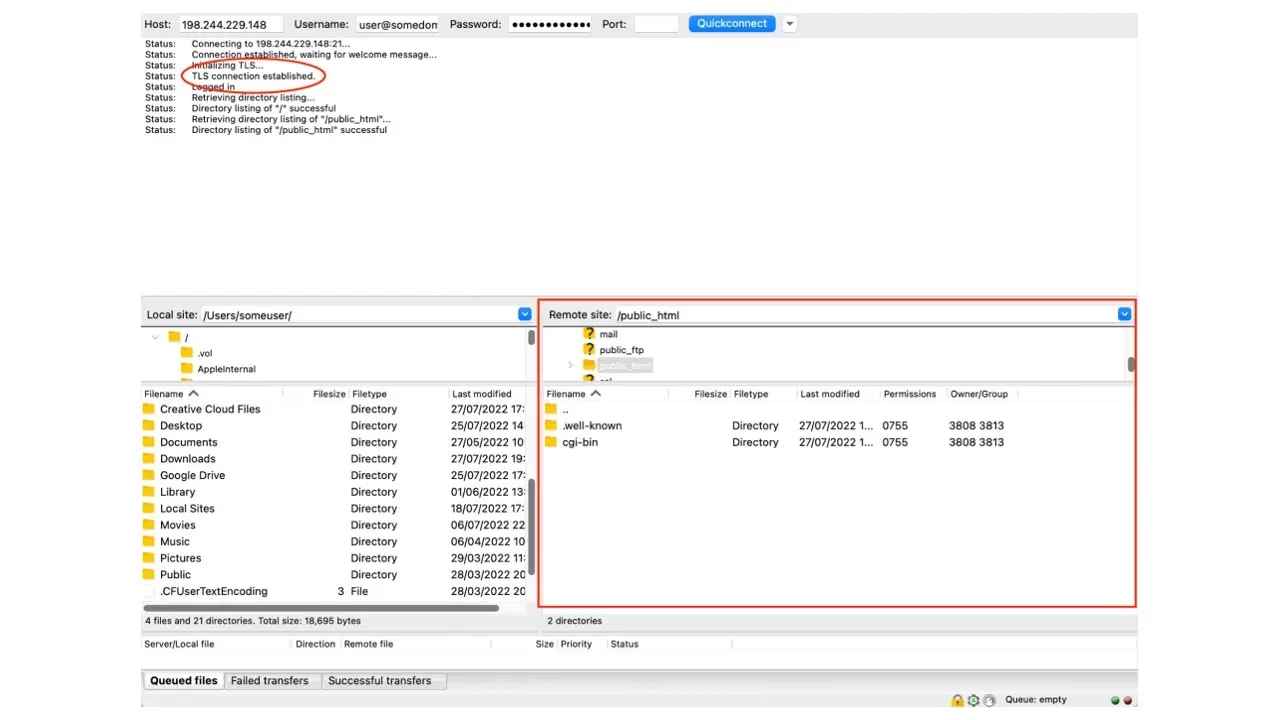
Note: If you plan to upload files to the server, you will most likely need to navigate the remote server file path to ‘/public_html’.
Wrapping Up
If you’ve made it this far, you’ve hopefully been able to connect to the web server via FTP successfully and can now access, upload and delete files that live on your hosting account.
Getting comfortable with accessing a web server via FTP and modifying its files is an extremely useful skill to have. Familiarise yourself with the interface and file structure until you get to this point as it’s often required for tasks such as: uploading a new/updated site to your hosting server, editing the .htaccess file, disabling plugins (when Wordpress errors occur) and much more.
We hope you’ve found this article useful. If you’re looking to get started with building your very own website, whether that’s using Wordpress as a CMS or not, check out some of our hosting plans! We look forward to seeing what websites you build…
Frequently Asked Questions
Is WordPress free?
All you need to do to use WordPress is to invest in a web hosting plan since the software itself is free.
Why choose Verpex for WordPress?
As the leading CMS out there, we’ve made it our mission to offer the most comprehensive and streamlined WordPress solutions on the market. Backed by a responsive customer care team and reliable site enhancement tools, we ensure our users get the full WordPress value and support for a reasonable price.
How does Verpex help with my reseller hosting?
Our job doesn’t end once we’ve sold you the reseller space. In fact, we’re with you for the whole time you’re hosting with us, supporting both your needs and that of the customers you pick up along the way, whether you max out your cPanel account limit or not.
The Verpex team is at your disposal, acting as your essential support team 24/7. That means anything pertaining to hardware, the network, updates and configuration, security, and connectivity, is all handled by us.
Both you and your customers can focus on running your businesses while we take care of all maintenance and troubleshooting with expert technical support.
What’s the difference between shared hosting and hosting for WordPress?
Shared hosting is a catch-all term for shared hosting services. Hosting for WordPress is a specialized hosting that’s optimized to the WordPress content management system. You can learn more about CMS WordPress on our blog.

Dylan is the founder of Winn-Brown & Co., an agency he started at the age of 16, specializing in website development and digital transformation. Since starting the company he has worked on hundreds of projects and with clients across a broad range of industries. Now in 2022, the agency continues to service new and existing clients alongside incubating some exciting side projects.
View all posts by Dylan Winn-Brown















